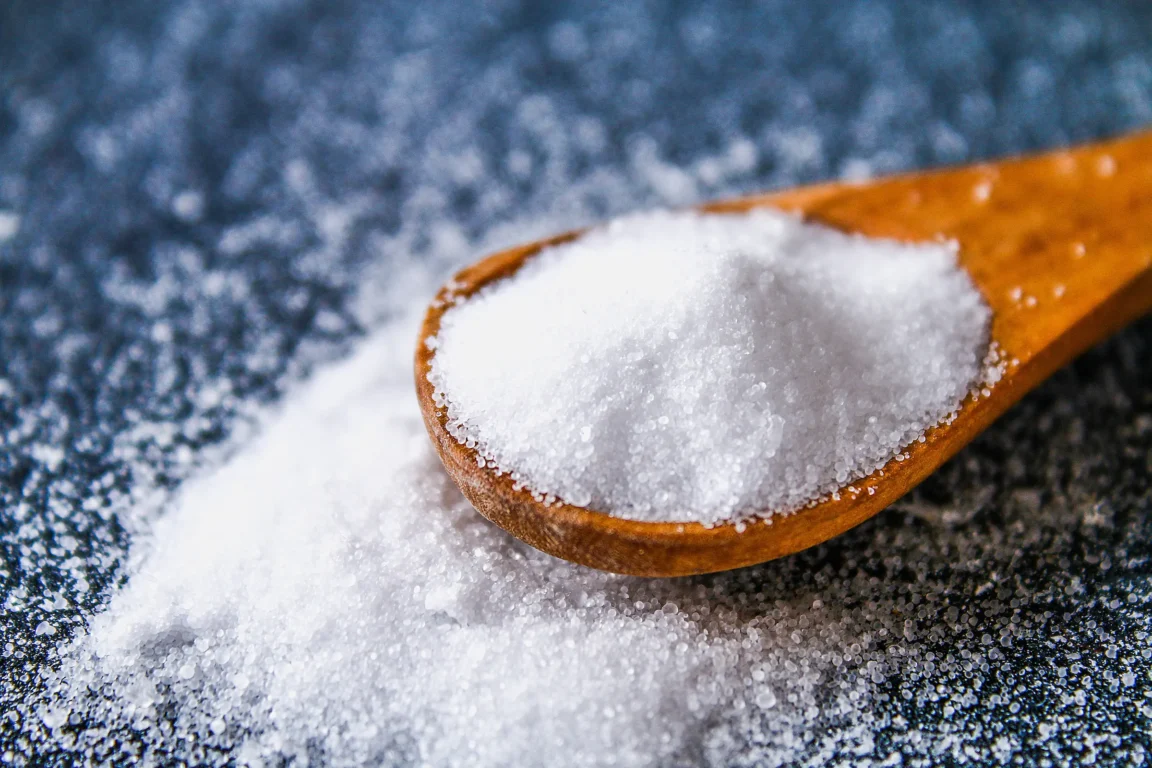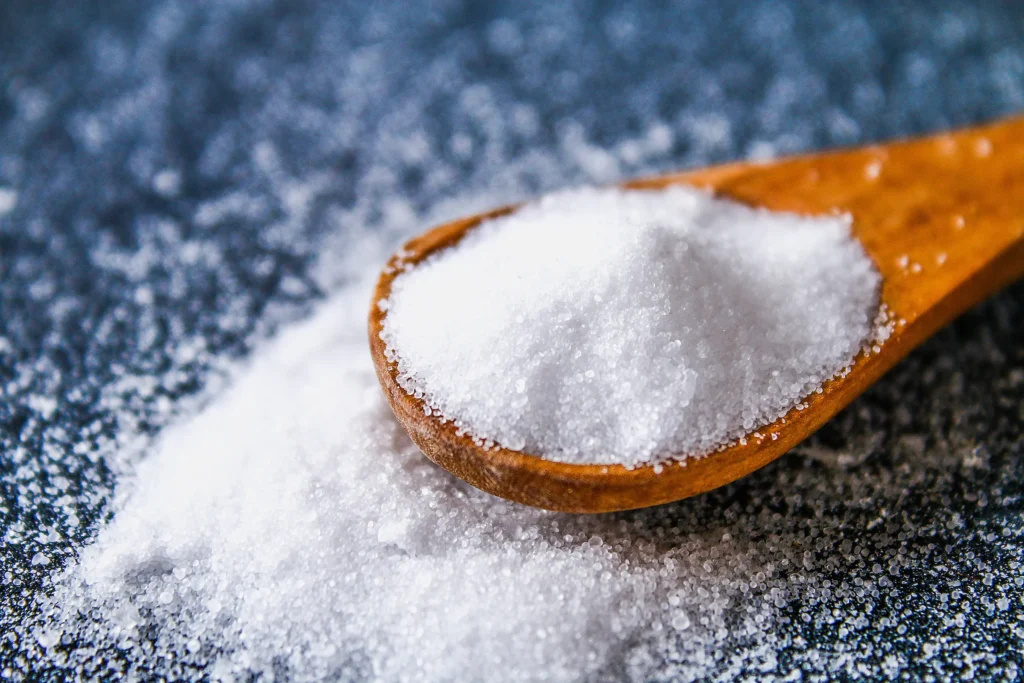We have all taken a bite of food, made a face, and declared “it needs more salt!”. Although salt helps flavor our favorite dishes, moderation is key. So, what happens when we eat too much salt?
We’ve been warned about the dangers of too much salt, but we rarely hear the reasons why. Keep reading to learn the benefits of reducing dietary salt, as well as easy ways to do so without compromising flavor.
Why Limit Salt Intake?
Many use the words ‘salt’ and ‘sodium’ interchangeably, but these are two different things. Sodium is a mineral found in salt, and the recommended daily allowance for sodium is 2,300 mg, or about one teaspoon of salt per day. On average, Americans consume 3,400mg of sodium daily, which can negatively impact health over time.
After we eat food with sodium, it enters our blood, and too much sodium causes the blood to get thicker. Through a series of steps where our body tries to fix this problem, the total amount of blood increases, but our blood vessels stay the same size. This puts more pressure on the vessels that carry blood around our body, leading to high blood pressure (or hypertension). High blood pressure can lead to other issues over time, like diabetes, strokes, and heart attacks. Keeping our blood pressure from getting high by eating less than 2300 mg of salt per day decreases the risk of heart issues in the future.
What Foods are High in Salt?
About 70% of the salt in our diet comes from prepackaged foods, like frozen meals or fast food. Be on the lookout for the following list of foods known as the ‘Salty 6’.
The Salty Six
- Breads and rolls
- Pizza
- Sandwiches
- Cold cuts of meat
- Soup
- Burritos and tacos
Also, be on the lookout for hidden sources of salt, especially in sauces and seasoning mixes. To avoid these, choose salt-free seasonings. All of the recipes for seasoning blends on our website are salt-free. If you want to try our delicious homemade taco seasoning, click here.
Reducing Salt Intake
So now that we know what foods are high in salt, let’s talk about how to reduce salt intake without compromising on flavor.
Read the Label
When in doubt, read the nutrition label on the back of the product.
The serving size is located at the top of the nutrition facts label, above the calories. Keep in mind that the sodium on the label is for one serving of the food, and not for the whole box.
The Daily Value can be found on the right side of the nutrition facts label, and it can help you figure out how much of your 2,300mg/day serving of sodium the food product provides. Look specifically for foods that are low sodium.
- Low sodium – food below 5% of the daily value for sodium per serving.
- High sodium – foods above 20% of the daily value for sodium per serving.
Let’s practice with the nutrition label below:
- What is the serving size?
- 1 cup
- How much sodium per serving does this product provide?
- 180mg/serving
- If you drank two cups of this product, how much sodium would you consume?
- 360mg of sodium (since the serving size is 1 cup and you drank 2, you will double the sodium)
- Is this product low-sodium?
- No. Products are low sodium if they are less than 5% of the daily value, and this product is 8% of the daily value.
Marketing Claims
Take any marketing claims on the front of boxes with a grain of salt – literally! They can be misleading.
Products that have the following labels mean that each serving contains less than 5% of the Daily Value for sodium.
- Salt-free
- Sodium-free
- Very low-sodium
- Low-sodium
On the other hand, watch out for the following labels. These foods have no restrictions, and they could contain lots of sodium.
- Unsalted
- No Salt Added
- Reduced-sodium
- Lower-sodium
It’s confusing, I know! Rather than memorizing this list, we would suggest looking at the nutrition facts label before trusting what the front of the packaging says about the amount of sodium it contains.
Use the 1:1 method for buying prepackaged food.
We like to use the 1:1 rule, which means there is one milligram of sodium for every calorie the product has. For example, if a product is 90 calories, we want to see that the sodium is 90 mg or below. See the graphic below for reference.
For a 2,000 calorie diet, this method tries to match the amount of sodium eaten to the amount of calories, which helps reduce sodium intake to about 2,000 milligrams.
Replace products with low-sodium versions.
Keep an eye out for easy grocery store swaps! For example, chicken broth and soy sauce are well-known for being salty, but these products also come in reduced-sodium versions.
You can also consider switching from canned beans to dried beans. Not only are they often cheaper, but they also contain no added sodium. To know more about the benefits of dried beans, check out this article, but if this swap doesn’t feel doable, simply rinse your canned beans to reduce the amount of salt in your finished recipe.
Eat more fresh foods.
If you find it hard to limit your intake of salty foods, don’t worry! Rather than focusing on limiting salty foods, focus on adding in fresh foods. Fruits and vegetables (or frozen, without additives) contain little to no natural sodium, so increasing fresh food is an easy way to reduce salt intake. These foods will naturally replace your more sodium-heavy foods over time.
Cook at home
Fast food and prepackaged foods can easily give us 2,300 mg of sodium in one meal, so one of the most effective ways to control sodium intake is to make more food at home! Here are some ideas to make this easier:
- Pack your lunch for school or work
- Prepare dinner ingredients ahead of time (such as cutting vegetables or soaking beans)
- Make a big batch of a recipe and eat the leftovers for the next 3-4 days (or freeze them for later)
You can try leaving out or reducing the amount of salt that a recipe calls for, or find low-sodium recipes. All of our recipes, such as our Chicken Pad Thai, don’t use salt, so browse our collection of over 300 recipes to find some to suit your needs.
In general, shooting for about 500mg of salt per meal will give you plenty of salt left over for snacks throughout the day.
Add Flavor Without Adding Salt
Do you find low-sodium cooking to be bland? Try one of the following ingredients to add flavor.
- An acid (like lemon or lime juice)
- Salt-free seasoning blends
- Fresh or dried herbs and spices
- Onions or garlic
Reduce Salt When Dining Out
Dining out is a fun way to spend time with friends and family, and sometimes ordering fast food is unavoidable. Keep these tips in mind when ordering your food to reduce the salt!
- Split meals with family members or friends
- Look at nutrition information online before ordering
- Ask the restaurant to make your food without salt: you can still add some at the table, but at least this way you can control the amount you eat.
- Order steamed vegetables or fresh fruit as a side
Give It Time
We tend to become less sensitive to the amount of salt we eat over time. This means that we may end up adding more salt to our food to achieve the same flavor effect as before. However, if we slowly reduce our salt intake, our taste buds will adapt, and we’ll eventually find that food with less salt tastes better than it did initially. So, it’s best to lower the amount of salt we consume slowly to allow ourselves time to adjust.
Summary
Little habits add up over time, and achieving our goals is easier together. Choose one of the tips listed above and try it out with friends or family this week. Let’s make the healthy choice the easy choice, one step at a time.



I’m doomed!!!! I don’t like the taste of food. I’m 80 years old and have salted (heavily) on everything but my water. That is next on my list. From The old Salty Dog.